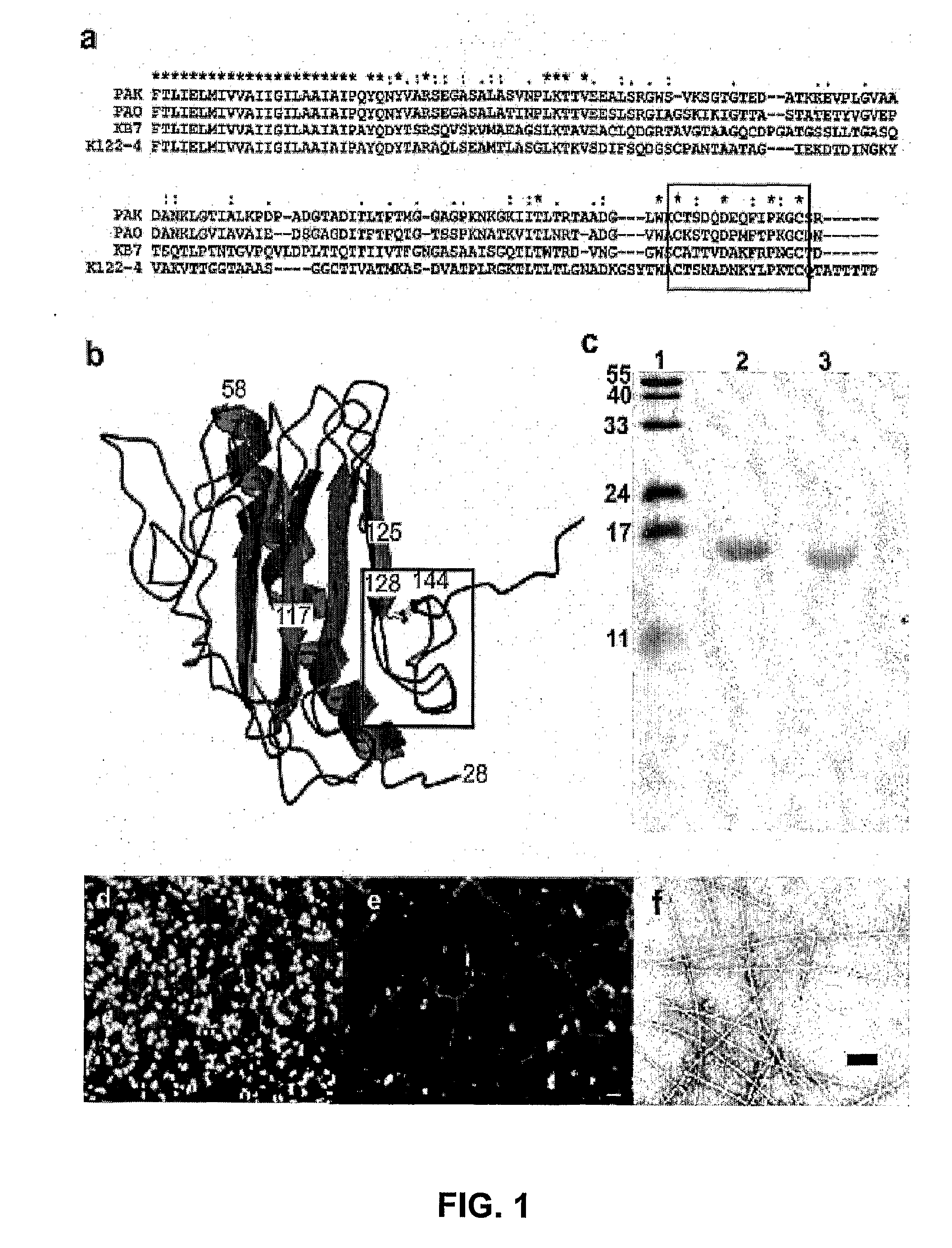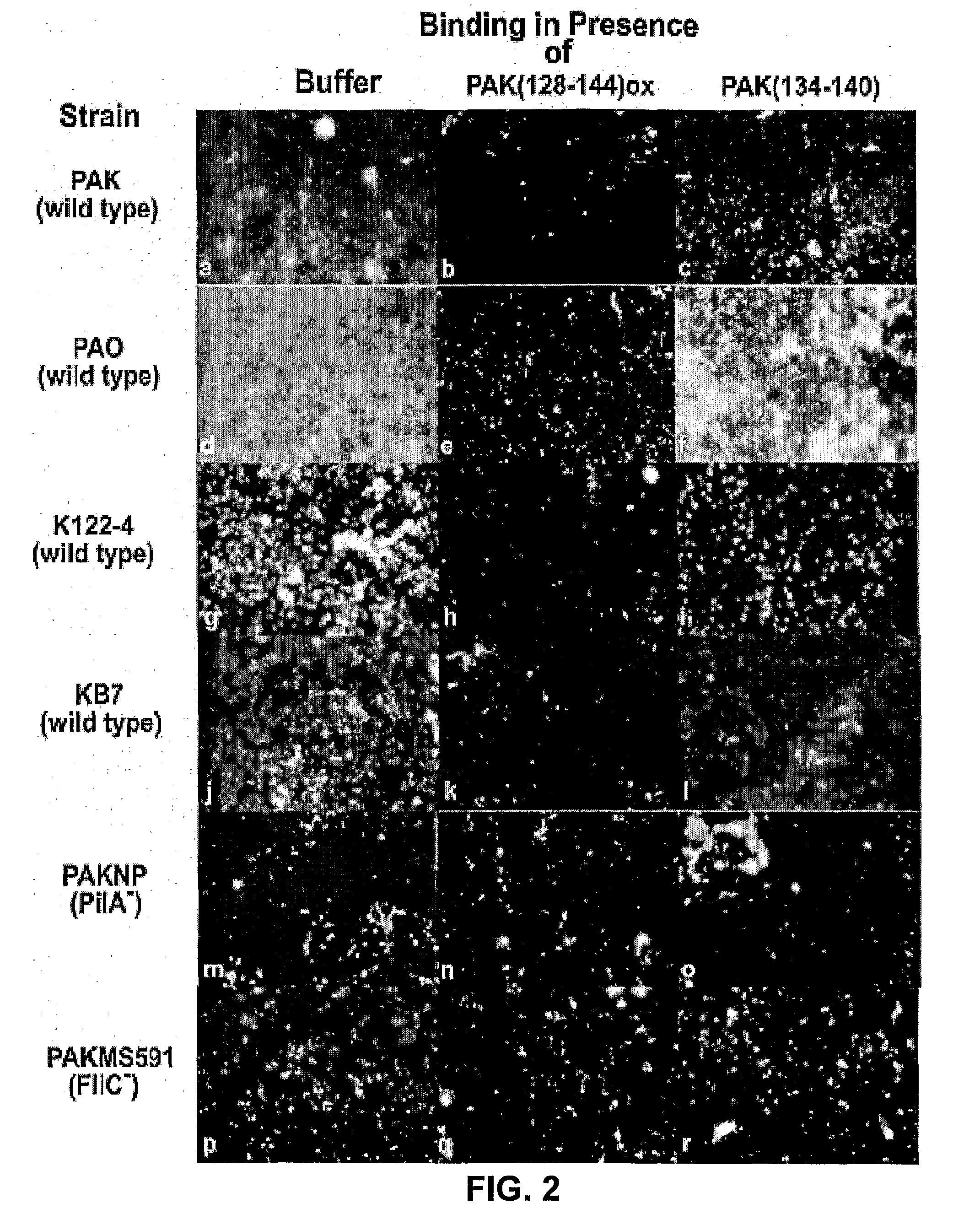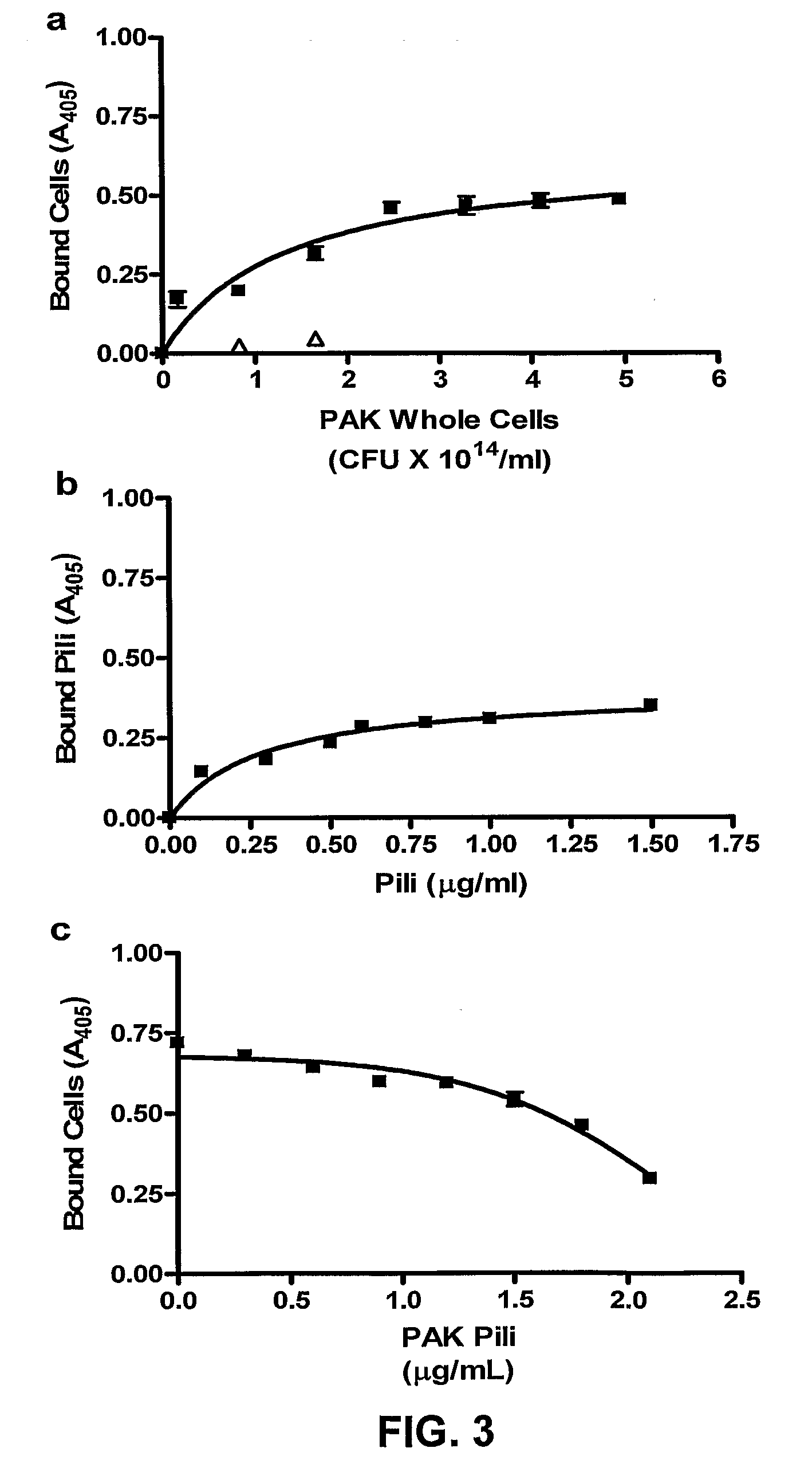Non-Toxic Biofilm Inhibitor
a biofilm inhibitor and non-toxic technology, applied in the direction of antibody medical ingredients, peptide sources, prosthesis, etc., can solve the problems of high mortality and morbidity, and the prevention or modulation of biofilm formation has been extremely difficult, and achieves the effects of preventing or inhibiting biofilm formation, high affinity, and inhibiting binding
- Summary
- Abstract
- Description
- Claims
- Application Information
AI Technical Summary
Benefits of technology
Problems solved by technology
Method used
Image
Examples
example 1
Bacterial Strains, DNA, and Antibody Sources
[0055]The P. aeruginosa strains used in this study were PAK, PAK 2Pfs (Bradley, 1974), PAK-BΩ, a 2 kB Ω fragment containing a transcriptional terminator from pHP45 was inserted into the pilB gene, PAK-Ω, the same transcriptional terminator was inserted into the pilD gene (Koga et al., 1993), PAKMS591, the gentamycin cassette from a pPC110 was inserted into the fliC gene (Starnbach et al., 1992), PAKNP the tetracycline cassette from pB322 was inserted into the pilA gene (Saiman et al., 1990), K122-4, a clinical isolate from a cystic fibrosis patient in Toronto which possesses both pili and flagella (Pasloske et al., 1988) and KB7, an isolate containing both pili and flagella (Wong et al., 1995). Several of these strains were generously provided by Dr. Jessica Boyd (NRC Institute for Marine Biosciences, Halifax, Nova Scotia). The strain PAK 2Pfs, a multi-piliated retraction deficient strain, was used for the purification of pili only and not...
example 2
Biotinylation of P. aeruginosa Cells and Purified Pili
[0056]Biotinylation of bacteria was preformed as previously described by Yu et al. (1996) with the following modifications. Harvested cells were suspended in 5 ml of phosphate buffered saline (PBS) (pH 6.8) with 75 μl of 20 mg / ml biotinamidocaproate N-α-hydroxysuccinimidyl ester dissolved in dimethylsulfoxide and incubated at 22° C. with agitation (200 RPM) in a water bath shaker for 1 hr. Cells were harvested by centrifugation (10,000×g for 10 min at 4° C.) and washed 4 times before resuspension in 1.0 ml PBS, pH 6.8. Viable counts were performed before and after biotinylation. PAK pili were purified from PAK 2Pfs as described previously (Paranchych et al., 1979). The purity and integrity of the pili were assessed by 15% SDS-PAGE (Sambrook et al., 1989) and electron microscopy (FIGS. 1-c, and f). The procedure used for the biotinylation of the purified pili has been previously described (Yu et al., 1996). The ability of the biot...
example 3
Stainless Steel Binding Assay
[0057]Grade 304 stainless steel 2B finish plates (20 gauge-1 mm thick and 7.6 by 11.5 cm) were washed in 95% ethanol for 10 min, and rinsed with distilled water. Immediately before the binding studies, coupons were washed with 20 ml of acetone for one min with gentle agitation and rinsed with distilled water. Coupons were then assembled into a Schleicher and Schuell Minifold™ System (Mandel Scientific Inc. Guelph, Ontario, Canada). Biotinylated viable PAK cells or purified PAK pili (biotinylated or unbiotinylated) were added (100 μl / well in replicates of 6) to the stainless steel manifold and incubated at 37° C. for one hr with gentle agitation. The manifold was subsequently washed 5 times with 250 μl / well Buffer A (PBS pH 7.4 containing 0.05% BSA). Binding was assessed using either streptavidin-horseradish peroxidase (HRP) or polyclonal PAK antibodies and secondary goat-anti-rabbit HRP (BioRad Laboratories Inc. Hercules, Calif.). Substrate buffer (0.01...
PUM
| Property | Measurement | Unit |
|---|---|---|
| pH | aaaaa | aaaaa |
| pH | aaaaa | aaaaa |
| concentration | aaaaa | aaaaa |
Abstract
Description
Claims
Application Information
 Login to View More
Login to View More - R&D
- Intellectual Property
- Life Sciences
- Materials
- Tech Scout
- Unparalleled Data Quality
- Higher Quality Content
- 60% Fewer Hallucinations
Browse by: Latest US Patents, China's latest patents, Technical Efficacy Thesaurus, Application Domain, Technology Topic, Popular Technical Reports.
© 2025 PatSnap. All rights reserved.Legal|Privacy policy|Modern Slavery Act Transparency Statement|Sitemap|About US| Contact US: help@patsnap.com



